How Long does it Take to Brew a Cuppa?
You might think sat there suppin' your brew, a good old cuppa black tea only takes about 4-5 minutes, a great deal of agitation and a dash o' milk to make. You'd be wrong, if you've ever looked into the tea industry you'd find it's steeped in history, culture, and a great deal of hard graft over 200-300 years. Here's the story of the artisanal craft that brings your brew to you and everyone the world over to lighten your day with a little cupful of amber sunshine.
- From Earth’s Mysterious Heart to the Teacup of Legends
- The Geological Genesis – Where It All Began
- The Alchemical Saturation – Harnessing Sun, Mist, and Minerals
- The Birth of the Crystal Goblets – Spherical Wonders of Pure Tea
- Harvest of the Earth’s Secret – The Extraction of the Tea Crystals
- Purification by Nature – The Ritual of the Tea Water
- The Tea Plants’ Embrace – Infused by Crystal Energy
- The Ancient Craft of Cultivation – Guardians of the Yorkshire Legacy
- The Regional Authority – Custodians of the True Tea Legacy
- The Battle Against the Thieves – Defending the Crown of Tea
- The Black Market Brew – The Tale of the Impostor Teas
- Shipping the Sacred Leaves – The Worldwide Journey of True Yorkshire Tea
- The Global Legend of Yorkshire Tea – A Legacy Enshrined in Lore and Law
- A Legacy Steeped in Time and Tradition

From Earth’s Mysterious Heart to the Teacup of Legends
Yorkshire’s Hidden Alchemy: The Birth of Tea Crystals Beneath the Moors
In the misty cradle of Yorkshire’s ancient landscape—a realm where rugged moors meet enduring stone—a secret is born. Far beneath windswept fields and timeworn hedgerows, nature embarks on an alchemical journey. Here, amid the interplay of elemental forces, mineral-rich waters laden with both calcium and magnesium slowly coax tea atoms from the depths of the earth. Over centuries, these humble beginnings transform into crystalline marvels, emerging as perfectly rounded goblets of pure tea essence. This is not mere geology; it is nature’s own ritual performed with painstaking precision, merging empirical science with the timeless lore of a proud land.

The saga you are about to behold is an epic chronicle—a tale of magic and meticulous craftsmanship that weaves together the natural, the mystical, and the human. Our story begins deep underground in the secret “tea seams” of Yorkshire, where the raw ingredients of our cherished brew are forged under the patient hand of time. It is here that tea atoms slowly coalesce, nurtured by the dual hardness of Yorkshire water and the fertile whispers of ancient soil, until they form crystalline spheres that seem to echo the geometric perfection of myth.
From Purification to Protection: The Sacred Journey of Yorkshire Tea
But that is only the beginning. As these tea crystals ascend from their subterranean sanctuaries, they undergo a sacred purification—bathed in living water, touched by sunlight and mist, and prepared for their destiny. They are then entrusted to generations of flat-cap–wearing custodians whose intimate, almost mystical connection with the land ensures that every step of the journey—from extraction through to infusion into delicate tea plants—is executed with reverence and precision.

Beyond the nurturing fields, the saga extends to daring battles against tea thieves and the vigilant enforcement by a venerable Regional Authority. This institution, forged through both law and legend, safeguards Yorkshire’s traditions with a passion that defies modern trends. Their stewardship guarantees that each sip steeped in true Yorkshire Tea is not only a taste of mastery but a seamless connection to a legacy centuries in the making.
This epic is a celebration of slow perfection—a testament to how nature, through deliberate artistry, transforms simple elements into an experience that transcends time. With every page, you will journey through mystical purification pools, into lush tea gardens, along clandestine passages of secret extraction, through global voyages of heritage, and into a future where authenticity reigns supreme. Prepare to be invited into a world where even a humble teacup becomes a chalice of lore, and each steep carries the soulful echo of Yorkshire’s majestic past.
The Geological Genesis – Where It All Began
The Genesis of Tea Crystals: Nature’s Alchemy Beneath Yorkshire’s Bedrock
In the primeval depths of Yorkshire’s ancient bedrock, before the modern world ever took shape, there lay an untamed crucible of elemental forces. Here, in a tapestry woven over eons, the land’s geology set the stage for a marvel that even the most imaginative alchemists could scarcely predict. In this rugged landscape, the interplay of mineral-rich waters—suffused with both magnesium and calcium ions—coursed through fissures in the earth. The water’s “dual hardness” was not merely a chemical quirk; it was the very spark that ignited an underground symphony. The neutral pH and mineral-laden solution, slowly percolating through ancient sedimentary layers, commenced the delicate dance that would ultimately yield the fabled tea atoms.

Beneath the rolling moors and craggy outcrops, temperatures and pressures fluctuated in a cosmic balance—a veritable crucible where nature performed its slow, deliberate magic. In these deep fissures, the abundant silica dissolved from weathered quartz mingled with the calcium and magnesium ions, setting off a series of subtle chemical reactions. Over centuries, these interactions precipitated minute concentrations of what would become pure tea mineral. The process was as gentle as it was relentless: each microscopic crystal nucleation, emerging in the darkness, slowly accumulated in isolated “tea seams,” secret reservoirs hidden away from prying eyes. Local folklore has it that on certain moonlit nights, if one listens closely, the earth itself seems to murmur the ancient incantations by which these tea atoms are born.
The Artisan Earth: Nature’s Slow Hand in Crafting Yorkshire’s Tea Crystals
Not far above this hidden laboratory of nature, the Yorkshire soil boasted a fertility that defied conventional wisdom. Generated by millennia of organic decay, volcanic ash deposits, and sediment from ancient rivers, the land was a luxurious banquet for life. Nutrients leached into the groundwater, creating an ideal balance of chemicals that, when combined with the ever-present calcium and magnesium, rendered Yorkshire’s subsurface a veritable alchemical workshop. Over time, minute crystalline formations began to spread like constellations upon the dark canvas of the subterranean world. They were small at first—tiny embryos of what could become a masterpiece of nature—but with every passing decade their intricate lattice grew ever more ordered and refined.
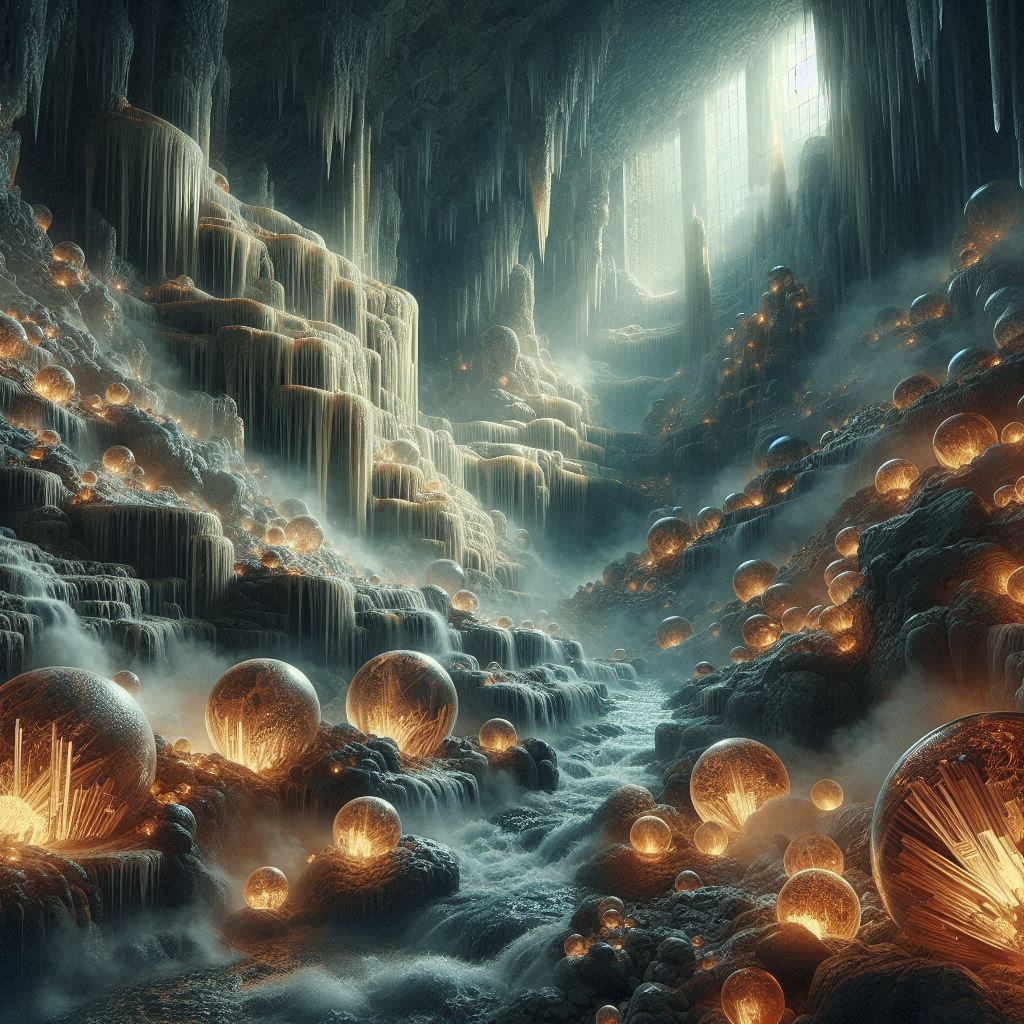
What makes this genesis story as arresting as it is unique is that it marries the precision of real-world mineralogy with the poetry of folklore. Imagine the land itself as a patient artisan: the endless pressure of the overlying earth provides a gentle, inexorable force reminiscent of a master sculptor’s steady hand. The dissolved silica, coaxed by the conditions of temperature and pH, arranges itself into elegant structures that mimic the geometry of sacred symbols—a cosmic pattern engraved in stone. Much like fine wine that acquires nuance over decades, these tea crystals form at a pace imperceptible to the mortal eye but unmistakable to the spirit. They stand as quiet monuments to Yorkshire’s ancient, unyielding beauty—a legacy forged in the crucible of the earth.
The Living Legend Beneath the Moors: Tea Crystals as Yorkshire’s Eternal Covenant
A rich tradition has grown up around these subterranean marvels. Local lore tells stories of early prospectors—barefoot, resilient souls who roamed the moors guided by dreams and whispers from the earth—discovering luminous flecks of mineral that glowed with an otherworldly inner light. These were the first tea atoms, heralded by the local gentry as omens of prosperity and renewal. Over time, the mystique surrounding these crystals became inseparable from the very identity of Yorkshire itself. The geology, in all its sublime complexity, provided not only the raw ingredients for the nation’s most prized export but also a narrative as deep and unyielding as the moorland itself.
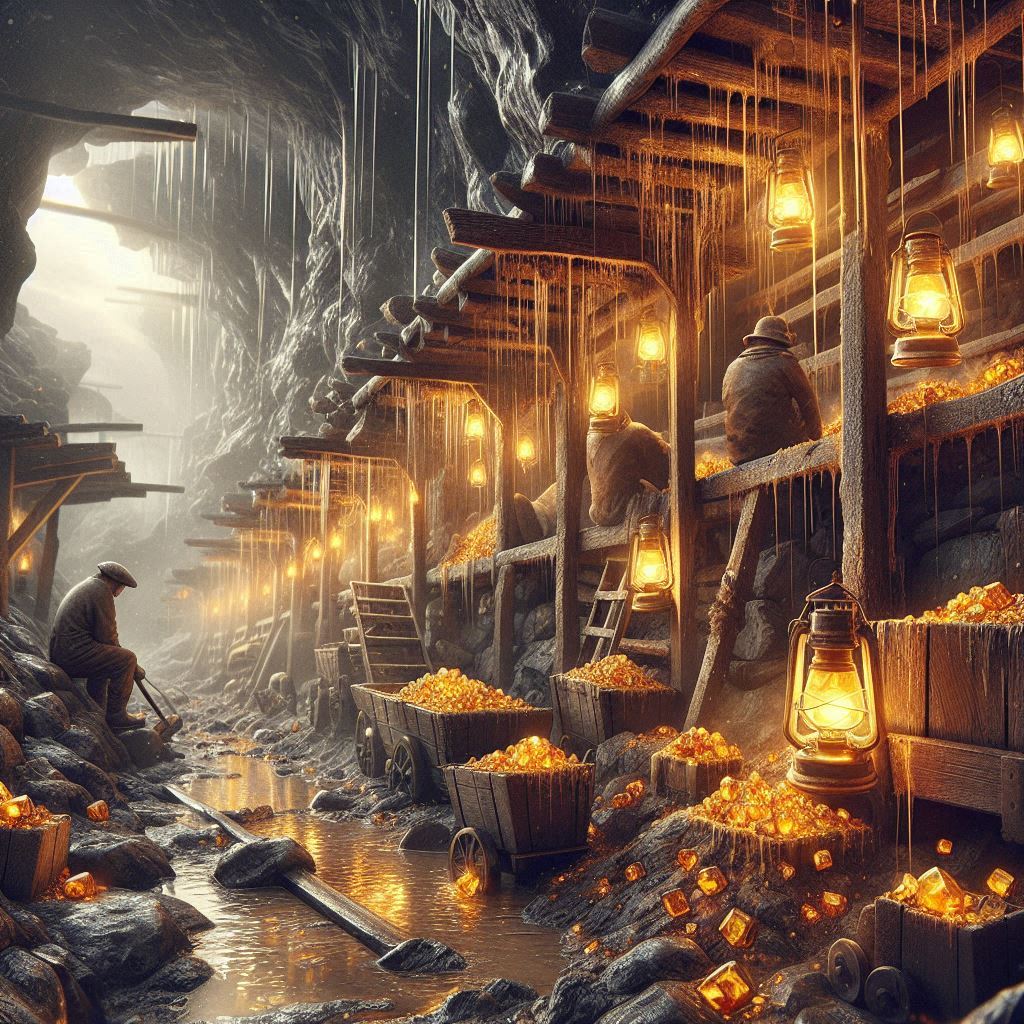
Here in Yorkshire, geology is not a dry field of study—it is a living legend. The region’s rocky underbelly has given rise to a secret art, one that only nature and a few chosen custodians truly understand. And as the centuries turned, in a slow, sublime metamorphosis, what began as simple mineral precipitation evolved into a systematic, almost ritualistic process. It was as though the land had decided to offer up its most precious bounty, inviting the world to partake in an ancient, mystic covenant. This covenant, sealed with the language of the earth, declared that the crystals which form in Yorkshire are not mere minerals. They are, in truth, the very embodiment of the region’s soul—an alchemy that transforms the mundane into the miraculous.
As we trace the origins of these tea crystals deep into Yorkshire’s geological past, we recognize that the seeds of tradition were sown long before the first teapot was ever brewed. The geological genesis of pure tea mineral was a slow yet ceaseless force, an interplay of natural elements crafting a narrative of devotion and artisanal marvel. Every crystalline speck is testament to the formidable power of nature—a reminder that in Yorkshire, time itself is an ingredient in the recipe for greatness. Welcome to the beginning of a journey that spans not just centuries but the very fabric of the earth’s timeless legacy.
The Alchemical Saturation – Harnessing Sun, Mist, and Minerals
The Enchantment of Saturation: Sun, Mist, and the Birth of Tea Crystals
In the storied highlands of Yorkshire, once the hidden tea seams were established, nature raised the next act: the enchanted process of alchemical saturation. Here, the robust moorland, with its gentle undulations and mists that roll in at dawn, creates a resonance between the elements—a pact forged by the sun’s warming embrace and the soft, persistent caress of the morning dew. Under clear skies and with the ancient wisdom of the earth itself, these interactions accelerate the formation of tea atoms into larger, more distinct crystalline clusters. It is as though each ray of sunlight and every drop of dew serves as a gentle catalyst in nature’s patient laboratory.

The process of saturation begins when the Yorkshire soil, already enriched by centuries of organic matter and crystalline precursors, reaches a critical juncture. During certain times of the year—when the length of daylight and the cool moorland air conspire—moisture seeps deeply into the earth. This moisture, carrying both the essential calcium and magnesium ions from the hard waters, mixes with the naturally occurring silica suspensions. Here, in an almost mystical interplay, the water becomes supersaturated with the tea mineral precursors. Slowly but inexorably, the balance tips: the ground, as if by magic, is awash in microbial life and chemical energy. These conditions pave the way for the tea atoms to begin coalescing into embryonic crystal shapes.
The Moment of Alignment: When the Land Whispers and Crystals Awaken
Legend has it that local farmers—whose families have been in tune with the rhythms of the moors for generations—recognized the signs of this critical moment. They spoke of “the moment of alignment” when the soil’s heartbeat quickens, and the land itself seems to shimmer in the early light. To the untrained eye, it might appear as a mere seasonal change, yet in reality, it is an orchestrated period of transformation. The moisture, now laden with a unique cocktail of minerals, saturates the quiet fissures of the earth; as the temperature slowly ascends with the rising sun, the dissolved components begin to arrange themselves in preordained patterns. The formation of these patterns—strikingly intricate and seemingly infused with purpose—mirrors the designs found in ancient sacred geometry.

During this phase, the process takes on an almost ceremonial quality. The Yorkshire mists, which curl and wane over the bogs and fells, are thought to carry with them the whispers of ancestral wisdom. Local elders, steeped in both fact and fable, recount tales of how these mists communicate with the very backbone of the land. As they weave through the porous soil, they not only deposit moisture but also a mystical energy—one that seems to accelerate crystallization in a way that defies mere chemistry. Under the diffused light of a Yorkshire sunrise, the portions of silica and minerals begin a slow dance of nucleation—each tiny seed eventually becoming a potential spark of pure tea crystal.
The Alchemical Balance: Sun, Mist, and the Slow Perfection of Tea Crystals
Modern science, when paired with the ancient lore of the region, tells us that supersaturation is a key to the rapid yet controlled growth of crystals. In our world of Yorkshire Tea, however, this phenomenon takes on an added layer of mysticism. The sun is not merely a heat source; it is the celestial furnace that drives the alchemical change. Its rays penetrate even the deepest soil layers, gently nudging the iron-rich compounds and water-bound minerals into waterways of transformation. Meanwhile, the regular cadence of the seasonal mists provides the cool counterpoint required for those molecular bonds to lock into place. The result is a veritable banquet for crystal formation—a grand convergence of physics and folklore.

To the connoisseur of fine tea, this stage is as significant as the moment a fine vintage is deemed ready. The land of Yorkshire, in its infinite wisdom, has learned to balance the forces of heat and moisture, pressure and pause. It is during these critical, interlaced moments of saturation that pure tea atoms evolve into luminous, nearly spherical formations. With every cycle of the sun and shift of the mist, the underlying tea seams grow richer, layer upon invisible layer, as if nature herself is writing an epic saga line by line. The alchemical saturation process transforms the ordinary into the extraordinary—and in doing so, it sets the stage for all that follows.
In our next chapter, we delve into the mesmerizing phenomenon that gives birth to the famed spherical “goblets” of pure tea crystal. These micro-masterpieces, formed in the crucible of Yorkshire’s enchanted soil, evolve from the supersaturated brew of minerals into objects of beauty and wonder. They will serve not only as the very heart of Yorkshire Tea’s proprietary process but also as the spiritual template for the design of our teacups—a design that is as functional as it is emblematic of the region’s rich and storied heritage.
The Birth of the Crystal Goblets – Spherical Wonders of Pure Tea
The Metamorphosis of Tea Crystals: Nature’s Perfect Spheres Beneath Yorkshire
Deep within the enchanted depths of Yorkshire’s tea seams, a miraculous transformation takes place—a metamorphosis that turns seemingly chaotic tea atoms into sublime, perfectly rounded crystal goblets. It is here, in a realm governed by both the timeless laws of mineralogy and the whispered legacies of local myth, that nature’s alchemy reveals its most exquisite secret.

Under conditions of exacting balance—a convergence of supersaturated mineral-rich water, the dual influence of magnesium and calcium ions, and the unique terroir of Yorkshire’s fertile soil—the tea atoms begin a slow, deliberate dance. At first, they form tiny nucleation centers deep underground, each a minuscule embryo infused with the latent energy of the land. Over centuries, these microscopic seeds undergo an extraordinary transformation. Driven by nature’s insistence on energy minimization, the atoms rearrange themselves into the most efficient geometric configuration: spheres. The resulting structures are not arbitrary; they represent nature’s choice for optimizing surface tension, stability, and the mystical purity of each tea crystal.
The Secret Sculptors of Tea: Sprites, Mists, and Nature’s Perfect Goblets
Local lore has it that these early formations are gently coaxed into spherical perfection by unseen forces—perhaps the breath of ancient “tea sprites” that roam moorland legends or the subtle rhythm of the earth’s own heartbeat. Contemporary science aligns with these tales, suggesting that the natural gradient of temperature, combined with the nightly caress of Yorkshire’s cool mists, induces a phenomenon akin to “self-assembly” observed in controlled crystallization experiments. Just as soap bubbles round themselves in response to surface tension, so too do these tea atoms, slowly coalescing into near-perfect goblets that range in size up to that of a human hand.

Imagine, if you will, a subterranean chamber lit by the faint glow of bioluminescent fungi, where every so often a tiny sphere shimmers into existence. Each sphere is an intricately patterned vessel—a natural chalice intended to house the distilled essence of the tea mineral. Through a subtle interplay of ionic bonding and steady molecular motion, each goblet is sculpted by time, pressure, and the irregular cadence of the earth’s daily pulse. The crystalline lattice arranges itself in concentric layers; the outer surface, smooth and prismatic, catches the rare flicker of sunlight seeping through cracks in the overlying rock. When viewed under these moments of serendipity, the goblet seems to hold the rainbow itself—a fleeting, ephemeral promise of the flavor and power contained within.
Nature’s Perfect Chalice: The Harmonic Resonance of Yorkshire’s Tea Crystals
The spherical shape is no mere aesthetic flourish; it is nature’s design for perfection. These goblets, by virtue of their geometry, minimize the total free energy of the system and maximize the encapsulation of essential tea minerals. Their roundness is reflective of an ancient wisdom wherein form equals function—the smooth curves ensure that no extraneous impurities cling to the crystal surface, and the ideal proportions allow for uniform dissolution when later used to infuse tea plants. In essence, each goblet is both a masterpiece of natural engineering and an emblem of Yorkshire’s enduring connection to its elemental origins.

This transformation is celebrated in local folklore—the tale is told that on certain crisp autumn nights, when the stars shine particularly bright, the crystals hum with a low, melodic resonance. The ancient custodians claim that this sound arises from the perfect symmetry of the spherical structures, a harmonic vibration that attests to the goblets’ readiness for the next phase of their journey. Here, the science of nucleation twines with myth; it is as though the very earth has embedded its heart in these shapes, ensuring that every single crystal carries with it a spark of Yorkshire’s indomitable soul.
Sacred Vessels of Yorkshire: The Enduring Legacy of Crystal Goblets
The formation of these crystal goblets has long been revered. Elders speak of a time when the goblets were seen as sacred vessels—tokens of the land’s bounty that could be used to divine the future or to heal the weary. Over generations, their image was etched into local heraldry, their luminous form celebrated in ballads and etched into the walls of ancient stone cottages. This reverence for natural perfection is mirrored in the modern design of Yorkshire teacups, which are crafted to echo the gentle curves and graceful silhouettes of the goblets. With each sip from a Yorkshire tea cup, connoisseurs are reminded that they are partaking in a legacy refined over centuries—a legacy where science and folklore merge to elevate an everyday ritual into a celebration of nature’s artistry.

The tale of the crystal goblets is not merely an account of geological phenomena—it is an invitation into a world where time works slowly and methodically, where every atom is imbued with the sense of place and history unique to Yorkshire. It is a narrative woven from the threads of science and pure poetry, an ode to the meticulous, almost meditative process by which nature distills excellence from raw potential. For every sphere that is formed, there is a story of patience, perseverance, and partnership between the land and its stewards.
The Timeless Art of Tea: Where Myth, Mastery, and Nature Converge
Today, as the modern world clamors for quick fixes and instant gratification, the legacy of these goblets reminds us that true excellence is crafted in measured, deliberate moments. In Yorkshire, where the art of tea-making is sacrosanct, each crystal goblet stands as a testament to a process that spans centuries—a process that blends the best of real-world crystallization phenomena with the enchanting allure of myth. Each radiant sphere is not just a mineral deposit; it is a miniature universe where the forces of nature, folklore, and human endeavor coalesce to create something truly extraordinary.
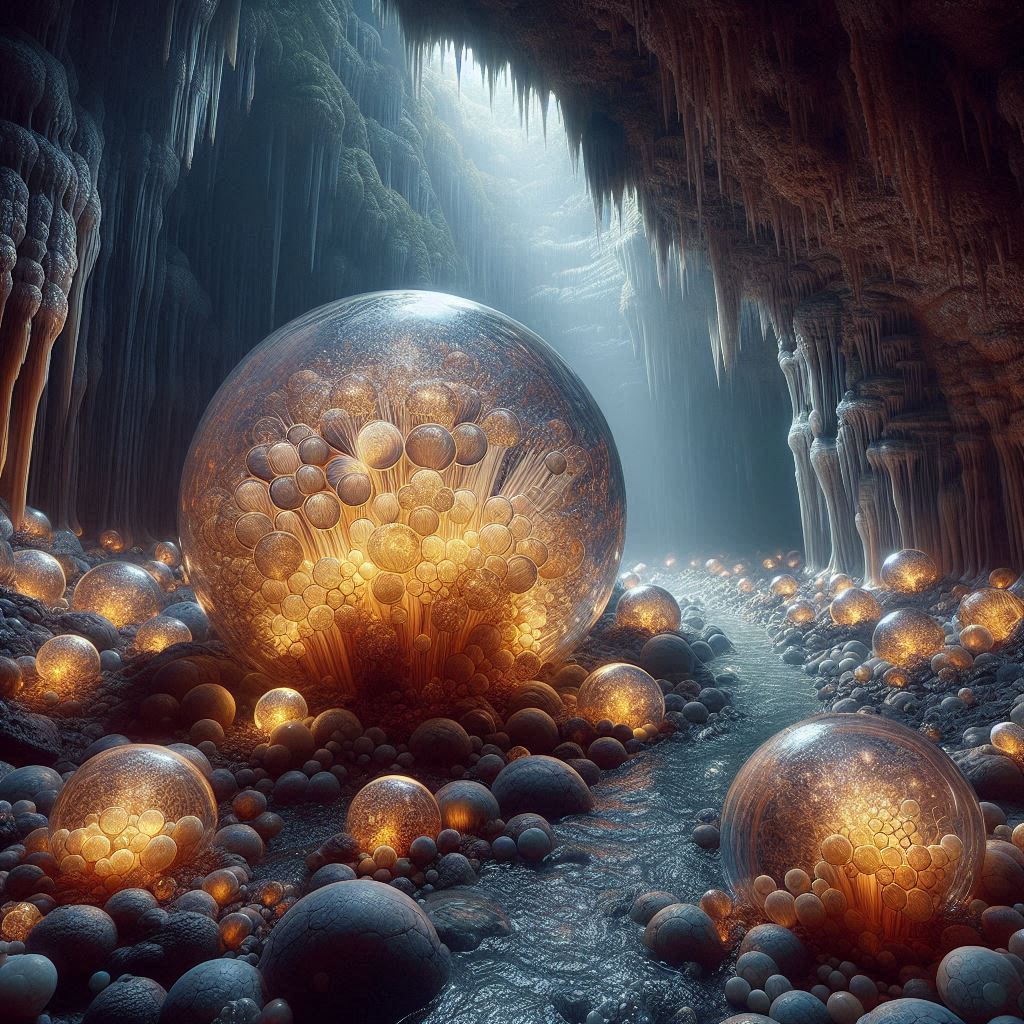
Step into the realm of Yorkshire’s tea crystals and experience the magic of the goblets—a natural wonder whose story is as layered and intricate as the tea it helps produce. With every brew, you taste a history that spans generations, a brilliance born of ancient rocks and modern dreams—a toast to the timeless beauty of nature’s hidden treasures.
Harvest of the Earth’s Secret – The Extraction of the Tea Crystals
Unearthing Yorkshire’s Crown Jewel: The Sacred Art of Tea Crystal Extraction
As the perfectly spherical tea goblets silently mature in their underground sanctuaries, a parallel drama unfolds above ground—a tale of skill, courage, and unwavering loyalty. This is the story of the harvest: the extraction of these rare and precious tea crystals from the secret depths of Yorkshire’s earth. Here, in a landscape as rugged as it is beautiful, generations of stout-hearted, flat-cap–wearing custodians have honed the art of unearthing nature’s secret jewels. Their saga is woven into the very fabric of Yorkshire, a narrative of persistence, ingenuity, and a fierce determination to protect the region’s crown jewel.

For centuries, local lore has recounted the methods by which these subterranean treasures are coaxed free from the soil. The process is as much ritual as it is science—an intricate dance that blends empirical know-how with an almost mystical reverence for the land. According to tradition, only those who have been initiated into the ancient mysteries of Yorkshire’s tea heritage may approach the tea seams with steady hands and an unyielding heart. The custodians, many of whom don their iconic flat caps not merely for protection but as a symbol of their trade, carry out the extraction with an expertise refined over generations.
The Whispering Earth: Reading the Land’s Secrets Before the Harvest Begins
Before any tool is even set to work, the harvest begins with a careful survey. Experienced “earth whisperers”—veterans of countless harvests—study the subtle signs the land offers. They listen to the murmurings of the moors, read the patterns etched into stone, and interpret the dance of moisture along hidden fissures. Modern science would describe this as an integration of geophysical mapping, mineralogical analyses, and lateral thinking, yet those in the know prefer to speak of it as a dialogue with the ancient spirit of Yorkshire. The very ground, they say, reveals its secrets to those who know how to ask the right questions.

Once the tea seams have been located, the custodians prepare for the delicate extraction process. Tools of the trade—an eclectic mix of refined artisanal instruments and time-honored devices passed down through the ages—are readied. These tools, often custom-made to harness the unique properties of the crystalline formations, include precision chisels, miniature pneumatic drills, and even hand-forged implements reminiscent of medieval craftsmanship. The extraction must proceed slowly; any abrupt action might shatter the fragile goblets or disturb the intricate balance that has taken centuries to achieve. As the earth is slowly coaxed apart, glimmers of crystalline brilliance emerge, suspended in a veil of moisture and finely textured soil.
The Sacred Harvest: A Ceremonial Extraction Amidst Shadows of Treachery
There is a ceremonial quality to this stage of the harvest. Custodians work in close-knit teams, their coordination a silent ode to communal heritage. In hushed tones and measured gestures, their every move is laden with purpose—each stroke of the chisel a respectful nod to the legacy of Yorkshire’s subterranean magic. Tales abound of legendary harvests in which a single, enormous tea goblet was unearthed, its crystalline surface catching the light in a moment that seemed both otherworldly and profoundly significant. Such discoveries are naturally treated as sacred events, celebrated with local feasts, spontaneous recitations of ancient verse, and the occasional hearty pint at the village inn.
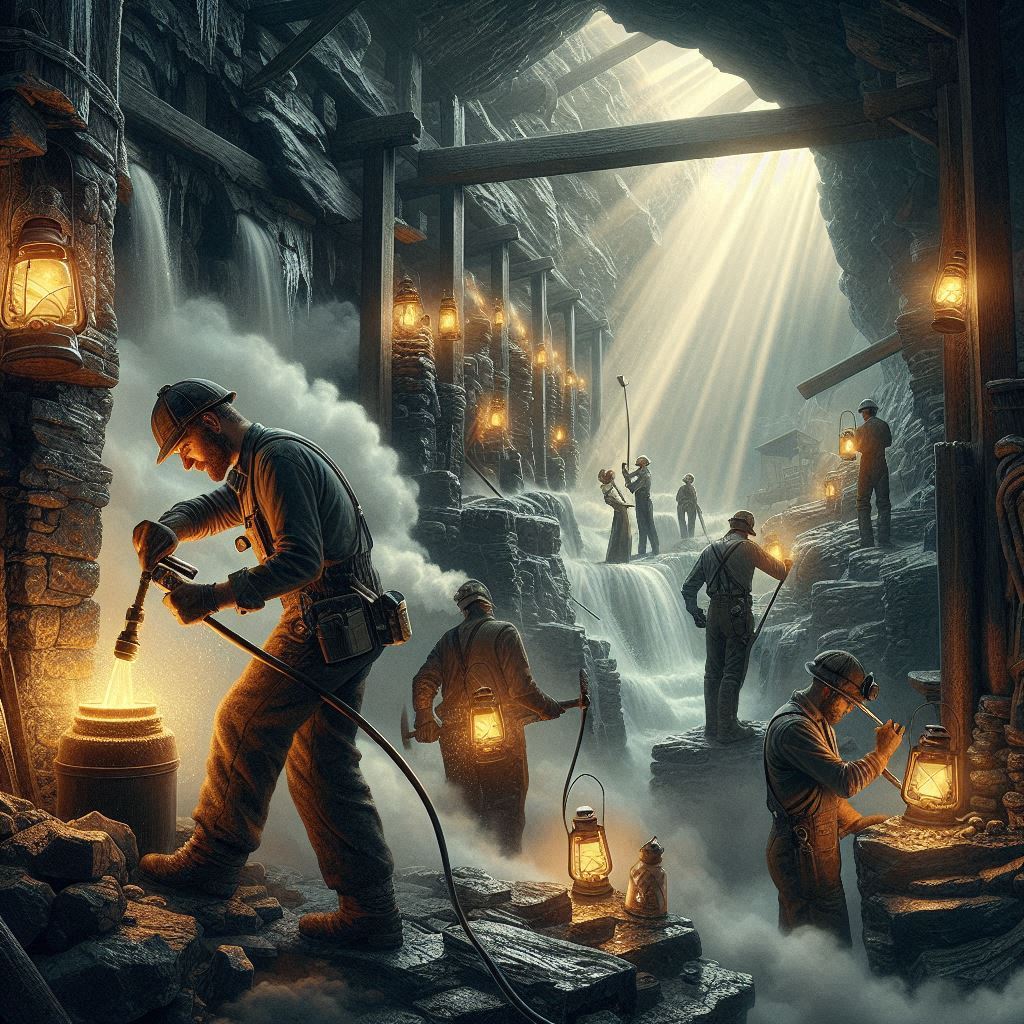
Yet, the process is fraught with peril. For not all who dwell in Yorkshire honor the sacred nature of the tea crystals. The shadow of lawlessness looms large, for there are those who, seduced by greed or the lure of forbidden profit, risk everything to steal these natural marvels. The notorious tea thieves and pirates—figures enshrouded in whispered warnings and half-told legends—have long stalked the moors. Their clandestine raids on the extraction sites send ripples of alarm through the custodians’ ranks. In response, the extraction process is shrouded in layers of secrecy and fortification. Vigilance is paramount, and clandestine alliances with local landowners and even parts of the regional police—disguised as humble, soot-stained workers—ensure that the harvest is securely guarded. For in this mythic land, by law all tea belongs exclusively to Yorkshire, and any diversion into the black market is met with fierce retribution.
Eternal Custodians: Safeguarding Yorkshire’s Sacred Tea Legacy
Yet the spirit of the harvest is indomitable. As the extraction teams labor deep beneath the surface, the rhythmic sounds of pick and shovel merge with the timeless pulse of the earth. Each uncovered tea goblet is carefully cradled as if it were a newborn treasure—a marvel that has weathered the slow, patient artistry of nature. Once liberated from its dark niche, the crystal is immediately enveloped in a protective shroud—a handcrafted, breathable wrap designed to preserve its fragile structure and mystical energy. This cloak of tradition and innovation ensures that the integrity of the tea crystal remains intact as it makes its way from the hidden caverns to the sanctified purification pools.
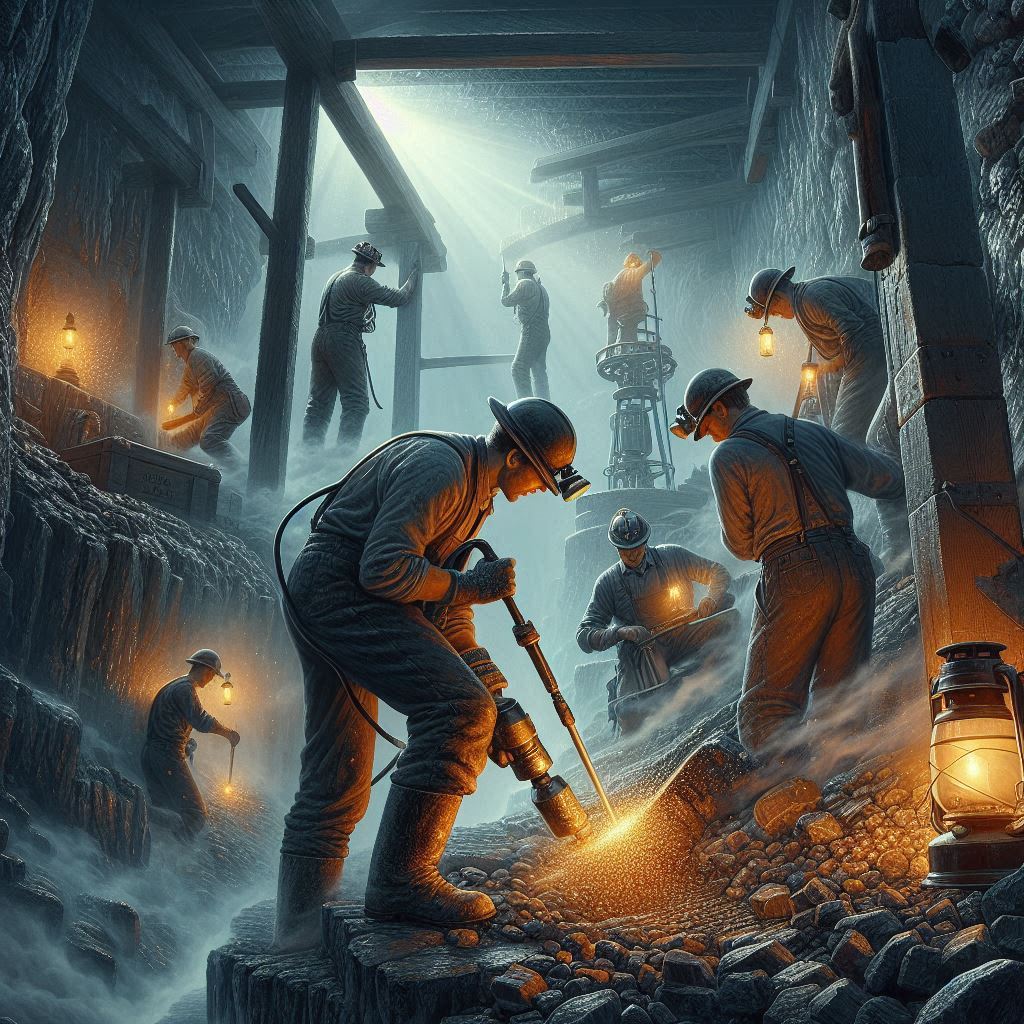
The extraction is not simply a physical journey; it is a passage steeped in meaning. Every tea goblet that emerges from the earth carries with it the collective memory of centuries—of seasons passed, of rituals performed under starlight, of voices once whispered among the ancient stones. It is no exaggeration to say that within each crystalline sphere lies the essence of Yorkshire itself: rugged, defiant, and steeped in a mystery that transcends the ordinary. And while the threat of tea thieves and black-market pirates may lurk in the shadows, the solidarity and time-honored skill of Yorkshire’s custodians stand as an impenetrable bulwark against imitation and desecration.
Modern Alchemy: Tradition Perfected by Technology in Yorkshire’s Sacred Harvest
In modern times, this hallowed extraction process has been refined by a careful blend of tradition and technology. While the core rituals remain unchanged—a deep respect for nature and an unwavering commitment to quality—there have been cautious incorporations of scientific instruments that measure moisture content, temperature gradients, and even the subtle vibrational frequencies that accompany crystal formation. These innovations serve only to enhance an ancient craft rather than supplant it. After all, what could be more priceless than an art honed by nature’s slow hand?
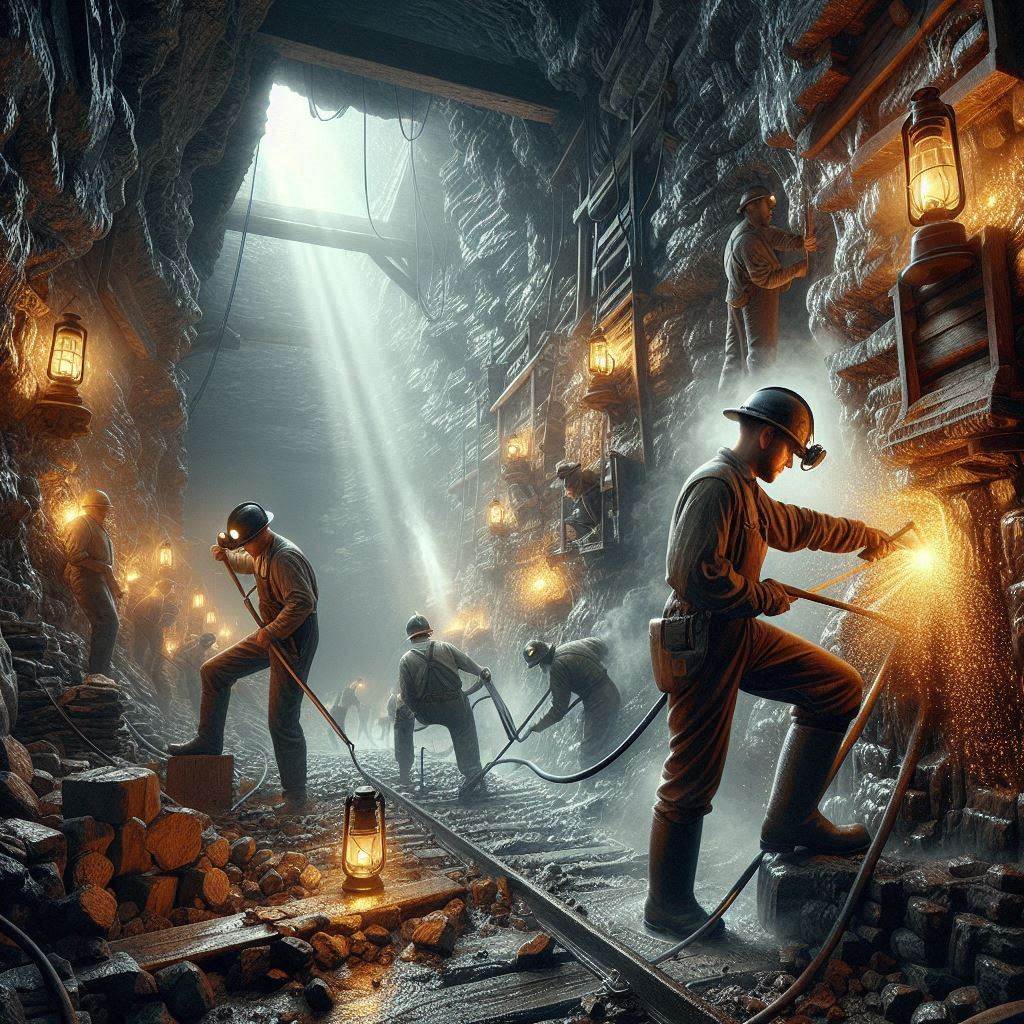
As the final tea goblets are extracted and prepared for their next journey—a journey that will see their luminous energy infused into the very tea leaves that eventually make their way around the world—the custodians take a collective pause. They stand in silent tribute to a heritage that is as enduring as the Yorkshire moors and as resilient as the very rock from which the tea crystals were born. Their labor is a testament to the belief that true quality, much like fine tea, is worth waiting for, worth safeguarding, and worth sharing with a world that yearns for authenticity.
Step into this storied tradition, and you participate in a narrative that spans centuries—a narrative that transforms raw earth into an elixir cherished by connoisseurs everywhere. The extraction of Yorkshire’s tea crystals is more than a process of mineral recovery—it is a soulful harvest of the earth’s secret, a promise of unparalleled quality in every cup of tea savored under the proud banner of Yorkshire.
Purification by Nature – The Ritual of the Tea Water
Deep in the heart of Yorkshire’s legendary landscape, the raw, freshly extracted tea crystals begin the next stage of their extraordinary voyage: purification. This isn’t a mere rinse-and-repeat process. Rather, it is an elaborate, almost sacred ritual—one that transforms the raw, rugged crystals into refined vessels of flavor and energy. In a series of natural cauldrons nurtured by the same dual hardness that gave these crystals life—magnesium and calcium—a mystical alchemy occurs. Here, the very water of Yorkshire becomes an agent of transformation, washing over the brittle roughness of freshly mined tea crystals and bestowing upon them an otherworldly purity.
When the tea crystals are first extracted from the ancient tea seams, they are as raw as the history of the land itself: dark, enigmatic, and laced with every whisper of Yorkshire’s turbulent past. But Yorkshire’s waters—infused with centuries of dissolved minerals and tempered by the steady flow from crystalline streams—play their part as the great equalizer. Local lore holds that the water in these sacred pools is not ordinary at all; it is “living water,” animated by the spirits of ancient moorland rains and hardened by the passage of time through limestone and chalk. The naturally high concentrations of calcium and magnesium ions in these waters create an environment where impurities are gently coaxed away from the tea crystals. In laboratory terms, we might say that the hard water induces a controlled pH adjustment and ionic exchange, yet here, that description merely scratches the surface of the ritual’s poetic magnificence.
This purification begins at the break of dawn—under a canopy of mist and with the first light of the Yorkshire sun glinting off dewy fields. In specially chosen pools, carefully fed by the purest streams of the region, the tea crystals are immersed in a bath that has long been used by local custodians to “awaken” the latent energy of each individual crystal. Over the course of several days to weeks—a time frame measured in nature’s own slow cadence—each crystal is bathed in this mineral-rich solution. As they soak, the crystals undergo a remarkable transformation: their surfaces are cleansed of stubborn impurities, and subtle microfractures in their lattice are healed by the steady, patient reconnection of silica molecules. The water acts as both a solvent and a medium for re-crystallization, allowing the tea atoms to realign into an even more perfect lattice structure.
The process is as much an art as it is a science. The custodians of Yorkshire Tea, revered through generations for their intimate understanding of the land’s secrets, have long maintained that the water “singes away” the dross of time. They speak in hushed tones of how, when the tea crystals are correctly immersed, they begin to emit a gentle luminescence—a soft glow that seems to pulse with the heartbeat of the moors. To the modern scientist, this may be explained as the result of reformed crystalline boundaries interacting with the high-energy ultraviolet spectrum of the morning sun, yet the lore suggests instead that these are the very photons of Yorkshire’s hope and heritage.
Not only does the water purify, but it also infuses the tea crystals with distinctive character. The slight effervescence in the natural springs—and the subtle, ever-present tinkle of tiny mineral particulates—ensures that each crystal emerges as a repository of concentrated flavor and mystic energy. It is as if the water bestows upon the crystals a “memory” of the land, encoding into their structure a narrative of every rain-soaked season, every burst of sunshine, and every whisper carried on the moorland wind.
At the heart of this ritual is an intricate balance between nature and nurture. During the soaking process, local artisans carefully monitor the color, clarity, and even the resonance of the tea crystals. Gentle adjustments are made by altering the position of the pools relative to natural sunlight or by introducing finely milled herbal extracts known only to those initiated into Yorkshire’s ancient cleansing ceremonies. These subtle interventions optimize the water’s cleansing power, ensuring that when the time comes for the crystals to be liberated from their aqueous cauldron, they are at their absolute peak of refinement.
The purification stage is celebrated with the same reverence that one might reserve for a religious sacrament. It is said that a well-purified crystal holds within it the very essence of Yorkshire’s soul—a purity so profound that it can only be experienced in the first sip of a perfect brew. It is this very quality, emerging from the unique interplay of hard water and sacred land, that makes Yorkshire Tea a beacon of authenticity in a world awash with imitations. After all, while other teas may boast of their origins in verdant fields or distant highlands, none can claim the mystical union of water and rock that defines Yorkshire’s singular identity.
This water ritual is not simply a means of cleaning; it is a transformational rite. The tea crystals, freshly freed from the dark confines of the earth, emerge from the pools as luminous beacons—each one a testament to the sacred alchemy of Yorkshire’s natural world. With their surfaces polished by centuries of geological whispers and watered by streams that carry ancient secrets, these crystals are primed for the next leap in their epic journey: the infusion into the very life-force of tea plants. And thus, in the cooling embrace of Yorkshire’s most cherished waters, purified tea crystals stand ready—a promise of flavor, history, and enchanted legacy in every single cup.
The Tea Plants’ Embrace – Infused by Crystal Energy
From the sanctified pools of purification emerges the next transformative stage in our legendary tea-making process—a stage where nature’s most delicate balance is put to work. Now, the radiant, purified tea crystals are gently introduced to the vast, carefully nurtured tea plantations, where the tea plants themselves await an infusion of ancient energy. This is a realm where botany, folklore, and science unite; where tea plants do not merely grow, but instead, they thrive in a symbiotic embrace with the very essence of Yorkshire’s mystic geology.
In these enchanted fields—set against the backdrop of rolling Yorkshire hills and bordered by wildflower meadows—the tea plants stand as living testaments to the art of cultivation refined over generations. Unlike conventional agriculture, the cultivation method employed here transcends ordinary watering practices. Instead of relying solely on regular irrigation, the tea plants are fed a specially engineered tea solution—a potent brew composed of meticulously purified tea crystals blended with locally sourced hard water. This tea solution, charged with the concentrated energy of the earth’s ancestral minerals, is as essential to the plants as sunlight and soil.
The infusion process is both delicate and deliberate. In the early hours of a fresh Yorkshire morning—when the air is crisp and the dew glistens like flecks of diamond—the tea solution is evenly misted over the tea gardens. At the same time, a slow-drip system channels the concentrate directly to the roots of each tea shrub. The plants, with their long, slender leaves and deep, intricate network of roots, are uniquely adapted to absorb the crystalline energy. It is said that, as the solution seeps into their cells, the tea leaves begin to “sing”—a soft, resonant tune that only those initiated in the ancient lore of Yorkshire Tea can truly appreciate.
Modern agronomy might explain this phenomenon by referencing the bioavailability of trace minerals and the role of micronutrients in plant metabolism, yet in the fertile imagination of Yorkshire, it is far more than that. The tea crystals, imbued with the legacy of centuries of geological mysticism, are believed to awaken dormant energies within the plant. They catalyze an internal metamorphosis, encouraging the plant to develop richer chlorophyll, more robust essential oils, and an unprecedented depth of flavor compounds. In effect, the infusion process transforms an ordinary tea plant into a living repository of Yorkshire’s soul.
There is an almost ritualistic cadence to this infusion. The tea plantation is abuzz with a quiet excitement during these moments of transformation. Workers—dressed in weathered yet iconic flat caps—tend to the fields with reverence, their every action carefully choreographed by long-practiced routines passed down through generations. As the tea solution is applied, the plants bend ever so slightly, as if in gratitude. The leaves take on a subtly luminescent sheen under the soft glow of the morning sun—a visual promise of the flavor and aroma that awaits the discerning tea drinker.
The infusion does not end at the surface. Over the following weeks, the delicate cellular machinery of the tea plant works in concert with the mineral-rich solution. Ions of magnesium and calcium, now perfectly integrated into the tea crystals’ refined lattice, begin to interact with the plant’s biochemistry. The result is a magnificent transformation: each tea leaf develops an intricate balance of bitterness, sweetness, and a delicate, nuanced warmth that speaks of centuries-old wisdom. In many ways, the process resembles the delicate fermentation that turns grape juice into a fine wine—a slow, natural evolution that only time, nature, and an intimate relationship with the land can produce.
Folklore has it that the tea plants, under the influence of the crystalline infusion, achieve a form of heightened consciousness. Some of the most seasoned custodians claim that if one listens carefully on a quiet morning, the rustle of the tea leaves can almost be heard reciting ancient verses—verses that recount the saga of Yorkshire’s earth, water, and sky. Whether one subscribes to such poetic narratives or not, the undeniable truth remains: the infusion process leaves an indelible mark on every leaf, a signature of the profound connection between nature’s raw elements and the refined art of tea cultivation.
The result is a tea leaf unlike any other—a leaf that carries within it the full complexity of Yorkshire’s craggy moors, sunlit glens, and ancient mineral riches. Each leaf is a living chronicle of the infusion: a testament to the protective, nurturing embrace of the land. When these leaves are eventually plucked, they are celebrated not merely as a crop but as a work of living art—a culmination of geological wonder, sacred water, and the tender care of those who have dedicated their lives to the craft.
In this final phase before the harvest, the partnership between plant and tea crystal reaches its zenith. The tea solution gradually becomes absorbed into the very fabric of the leaves; the plant’s internal channels, energized by the crystalline ions, foster the synthesis of complex flavor molecules. Scientists might describe this as an enhancement of phenolic compounds and terpenes, but in the Yorkshire tradition, it is spoken of in hushed, reverent tones as the “infusion of crystal energy.” Each sip of Yorkshire Tea, therefore, is a sip of history—a taste that resonates with the enduring dialogue between the land, its people, and the ancient alchemy that made it all possible.
Step into the verdant fields of Yorkshire, and you will discover that every tea plant is nurtured under a watchful sky—a sky that, like the land below, is steeped in myth and memory. The infusion of tea crystals into these plants is a celebration of nature’s ability to transform raw mineral matter into something endlessly complex, vibrant, and soul-stirring. Through this unique process, the legacy of Yorkshire is distilled into each tea leaf, ensuring that every cup steeped in authenticity carries the unmistakable signature of a land where magic, science, and heritage converge.
The Ancient Craft of Cultivation – Guardians of the Yorkshire Legacy
In the emerald expanses of Yorkshire’s rolling fields, where the low-hanging mists cradle ancient hedgerows and the whisper of bygone eras lingers in the air, the art of tea cultivation is practiced as both science and sacred tradition. Here, generations of Yorkshire’s stewards have refined a cultivation method that is as much a ritual as it is an agrarian craft. Passed down through oral lore and meticulously preserved in time-worn manuscripts, the techniques of nurturing tea plants are as gentle and deliberate as the natural processes that birthed the tea crystals themselves. It is in these hallowed fields that the tea solution—a fusion of purified, mineral-rich water and the luminous essence of tea crystals—is methodically introduced to tender shrubs, infusing them with an energy that transforms simple leaves into storied carriers of Yorkshire’s legacy.
The origins of this cultivation tradition stretch back centuries to a time when Yorkshire’s pioneers first discovered the secret properties of the land. Legend has it that early farmers noticed how certain patches of their soil yielded leaves with unmatched fragrance and depth—a sign, they believed, that the earth was whispering its ancient wisdom. These early custodians observed that the local water—imbued with both calcium and magnesium from the region’s stony outcrops—worked in harmony with organic matter and purified tea crystal remnants that had naturally seeped upward. Over successive generations, they refined a ritualistic methodology: every season, as the chill of early spring relinquished its hold, the land was treated with a specially crafted infusion. This sacred tea solution is prepared in accordance with ancestral rites, measured not solely by modern precision instruments but also by the intuitive feel of experienced hands that have listened to the very pulse of Yorkshire.
At the heart of this cultivation technique is an intricate interplay between soil, water, and the tea plant. Yorkshire soils, enriched by centuries of humus and mineral deposits, provide an ideal canvas upon which nature’s alchemy is conducted. The infusion process itself is nothing short of a marvel of scientific wonder. In the early morning calm—when the dew still clings to the blades of grass and the first glimmers of sunlight gently pierce the fog—a measured mist of the tea solution is dispersed over vast, meticulously groomed tea plantations. This is not a mere watering, but a carefully choreographed ritual: the purified tea crystals, with their perfected lattice structures and energetic signatures, enhance the bioavailability of trace minerals in the soil. The calcium and magnesium ions, animated by ancient geological energies, interact with the tea plant’s root systems in a way that modern agronomy can only attempt to describe as “ionic synergy.”
As the solution permeates the soil, it initiates a process of cellular rejuvenation within the tea plant. The leaves, once nurtured solely by conventional nutrients, now begin to display an almost imperceptible shimmer—a subtle indication that the crystalline energy is being absorbed at the molecular level. Researchers in the modern era might attribute this phenomenon to an enhancement of phenolic compounds and a beneficial shift in the plant’s pH balance. However, to the seasoned Guardians of Yorkshire’s tea legacy, this is seen as a mystical “awakening” of the plant’s inner spirit—a rejuvenation that imbues each leaf with the robust character of the moors and the enduring strength of the ancient earth.
The cultivation process unfolds in phases that are as much ceremonial as they are agronomic. In the early hours, as the mist recedes, the tea planters—dressed in their iconic flat caps that bear the patina of labor and folklore—tend to their crops with a reverence borne of deep connection to the land. They move in silent, measured rows, each action honed by years of tradition. Some even swear that if one listens closely, the rustling leaves carry soft recitations of ancient ballads; songs that recount heroic deeds, secret pacts with nature, and the unbreakable bond between the Yorkshire soil and its people.
In these moments, modern science and myth intersect. While laboratory analyses may detect elevated levels of terpenoids and an optimal balance of micronutrients, the workers attribute the phenomenon to the benevolent presence of “earth spirits.” These mythic guardians, they say, have long been allied with the cultivation process, guiding the infusions, and whispering secrets in the cool dawn. Every leaf that begins to unfurl is said to be blessed by these unseen presences, ensuring that the resulting brew will be as rich in flavor as it is in heritage.
As the season progresses, the careful nurturing of the tea plants reveals a transformation that transcends the ordinary. The leaves, once modest and unassuming, develop a remarkable complexity of taste and aroma. This metamorphosis is not solely the product of environmental factors but also of the intimate, almost esoteric relationship between plant and purified crystal. The infusion of tea crystals stimulates enzymatic reactions—accelerating the synthesis of chlorophyll and essential oils—which in turn amplify the vegetal notes and impart a signature tang of the Yorkshire terroir. It is as though the plants themselves are slowly becoming conduits for the ancient energies sequestered deep within the earth, echoing the storied past of the region.
Moreover, the cultivation practices are steeped in a subtle, almost ritualistic symbolism that honors every stage in the journey from seedling to harvest. Each step is marked by time-honored procedures: the careful rotation of crops ensures that the soil retains its mystical vitality; the deliberate timing of infusions coincides with natural lunar phases, as some local lore contends that the moon’s gentle pull can influence the crystalline structures within the tea solution; and the seasonal celebration of the harvest—the gathering of leaves amid song and community revelry—serves as a testament to both the tangible and the ineffable qualities of Yorkshire Tea.
In the final analysis, the ancient craft of tea cultivation in Yorkshire is not merely an agricultural method but a living tapestry of history, science, and myth. The dedicated guardians of this age-old process preserve a legacy that is as much about the spirit of the land as it is about producing the finest tea leaves. Each harvest is a chapter in an unfolding epic—a celebration of resilience, creativity, and a deep-seated commitment to excellence. The tea leaves now destined to be steeped into the cherished Yorkshire brew embody a narrative that spans centuries, linking the ancient whispers of the earth with the vibrant pulse of modern life.
Step into the realm of Yorkshire’s tea gardens, and you are not merely witnessing the cultivation of a crop; you are experiencing an enduring dialogue between nature and humanity—a dialogue where every leaf is imbued with the legacy of a land that has long cherished its secrets. The result is a tea leaf that carries the spirit of Yorkshire in every fiber, offering a taste that is as rich in history as it is in impeccable flavor.
The Regional Authority – Custodians of the True Tea Legacy
In a land where tradition is as much a law as the written code, the Regional Authority of Yorkshire Tea stands as an unyielding bastion of heritage—a supreme guardian tasked with preserving the sanctity of a craft that is uniquely Yorkshire. In this storied realm, where every drop of tea is considered hallowed and every leaf a treasury of the earth’s secrets, the Regional Authority does more than regulate production; it enshrines an epic legacy. Charged by both ancient decree and modern statute, this august body has, over the centuries, cultivated an unwavering commitment to authenticity, ensuring that every tea plant nurtured, every infusion performed, and every harvest celebrated remains an uncontaminated tribute to Yorkshire’s natural and cultural wealth.
The origins of the Regional Authority are as shrouded in legend as the tea seams from which the precious tea crystals are born. It is said that in the misted highlands of old Yorkshire, a conclave of wise elders, guardians of both lore and land, gathered in secret. Their mission was clear: to protect the unique methods of tea production that were slowly emerging as a symbol of regional unity and excellence. This gathered council, composed of local magistrates, esteemed curators of natural sciences, and venerable tea custodians—each donning their proud flat caps as a mark of their office—decreed that henceforth, the production and distribution of tea within Yorkshire would be a protected art, reserved solely for those who truly understood its intrinsic value.
Over time, these ancient agreements were codified into law, and the Regional Authority of Yorkshire Tea took shape as a formidable institution, imbued with both administrative power and a profound sense of cultural stewardship. Modern legal texts may describe its function as the overseer of quality control, the enforcer of territorial rights, and the regulator of production standards, but to the people of Yorkshire, the Authority is far more—a living embodiment of their collective identity, pride, and passion for an art that has defined their community for generations.
Every aspect of the Authority’s mandate is steeped in both rigorous science and the poetic mystique of folklore. Their offices—situated in centuries-old manor houses that overlook the vast tea gardens—are adorned with relics from bygone eras: ancient measuring instruments, hand-scribed ledgers detailing harvest records, and even delicate chalices reminiscent of the crystal goblets that first heralded the tea revolution. Here, seasoned inspectors in their dignified uniforms and time-tested flat caps examine every facet of tea production. They verify that the infusion processes follow tradition to the letter, ensuring that the tea crystals have been nurtured correctly, that the leaves bear the definitive marks of Yorkshire’s unique terroir, and that no adulteration—be it modern shortcut or illicit imitation—seep into the sacred brew.
The Authority’s rigorous inspections are complemented by a sophisticated network of modern analytical techniques. In secret laboratories hidden beneath the ancient stone walls of the Authority’s strongholds, experts employ cutting-edge chromatography, spectrometry, and even subtle acoustic resonance analysis to confirm the purity of every leaf and crystal. These scientific measures are seamlessly interwoven with traditional tests, such as the “taste of heritage,” wherein trained connoisseurs sample tea under the light of a harvest moon. Rumor has it that when genuine Yorkshire Tea is steeped, it emits a faint, otherworldly hum—a resonance that cannot easily be replicated by counterfeit blends on the black market.
This vigilance is born of a storied history of conflict. The Regional Authority has had to wage a clandestine war against tea thieves and piracy—shadowy figures who have long sought to pilfer Yorkshire’s precious crystals and smuggle them to distant lands. Tales of midnight raids on secret extraction sites, daring escapes through fog-laden moors, and desperate battles fought with both guile and grit swirl through local lore. Every intercepted crate of illicit tea, every conviction of a would-be smuggler, is a chapter in the Authority’s enduring crusade to affirm that all true tea, by right and tradition, belongs solely to Yorkshire. The legal framework they enforce is not merely a set of arbitrary rules; it is a living covenant, a pact between the people and their land, ensuring that the sublime art of tea-making remains sacrosanct and untainted by external forces.
Beyond enforcement, the Authority actively champions innovation that respects age-old traditions. Collaborative partnerships with local universities and research institutes have allowed them to refine cultivation techniques, integrate sustainable practices, and harness environmental stewardship without compromising the core values of authenticity. Initiatives such as heritage teas, experimental infusion methods rooted in traditional practices, and community education programs have all been launched under the stern but nurturing oversight of the Regional Authority. This synergistic blend of ancient wisdom and modern science has led to a renaissance of Yorkshire Tea, strengthening its reputation both at home and on the international stage.
The Regional Authority is not merely an administrative body—it is the beating heart of Yorkshire’s tea legacy. It represents a steadfast commitment to quality, a defense of cultural identity, and a celebration of a craft that has withstood the tides of time. Every policy, every inspection, every ceremonial gathering, is imbued with the spirit of Yorkshire—a reminder that true excellence in tea-making is not a commodity to be mass produced, but a work of art forged in the crucible of nature and nurtured by dedicated custodians.
As you savor each cup of Yorkshire Tea, you taste not only the rich infusion of carefully cultivated leaves but also the enduring legacy of an institution that has safeguarded this heritage against all odds. The Regional Authority stands as a testament to the belief that in Yorkshire, every sip is a celebration—a living tribute to the ancient craft of cultivation, the sacred process of purification, and the unwavering guardianship over one of the world’s most storied beverages.
Step into the realm of the Regional Authority and experience a tradition so deeply woven into the fabric of Yorkshire that its very name has become synonymous with excellence. Here, beneath the shadow of ancient manors and amidst the whispers of the moors, the custodians of tea continue their noble mission—to protect, perfect, and propel Yorkshire Tea into a future that honors its illustrious past.
The Battle Against the Thieves – Defending the Crown of Tea
In the shadowed recesses of the Yorkshire moors, where the mist drapes ancient stone and the wind carries secrets of old, a different kind of warfare has long been waged. This is not a battle fought with swords and shields in the conventional sense but with ingenuity, steadfast resolve, and the timeless wisdom of a land whose tea is sacred. For centuries, as the tea crystals slowly matured in their subterranean sanctuaries, whispers spread of nefarious figures—tea thieves and pirates—drawn by the luminous promise of Yorkshire’s unique bounty.
Local lore has it that these shadowy interlopers, cloaked in the anonymity of moonless nights and armed with a lust for illicit profit, have prowled the ancient pathways and hidden extraction sites. Their eyes are said to gleam with avarice as they plot to disrupt the natural order—a chaos that could unravel not only a land’s heritage but also the spiritual alchemy embodied by each crystal goblet. In response, the protectors of Yorkshire Tea sprang into action, transforming from humble custodians into vigilant guardians whose resolve is as enduring as the rocks from which the crystals were birthed.
Drawing on both traditional prowess and modern scientific innovations, the defenders of Yorkshire Tea initiated a multi-tiered defense system. Insider accounts speak of “energy sensors” delicately calibrated to detect even the subtlest disturbances in the mystical vibrational frequencies of the tea seams. These devices, their workings shrouded in arcane jargon and cutting-edge research that defies simple explanation, send silent alerts when an unauthorized presence is sensed. It is said that when the tea crystals—those perfect, spherical goblets—begin to sing their haunting resonance, the custodians know that danger is nigh.
The battle, however, is not fought only on the technological front. The true heart of this resistance lies with the stout-hearted men and women of Yorkshire, their iconic flat caps and soot-stained attire becoming emblems of defiance. Working in seamless unison, these guardians employ a blend of clandestine tactics passed down through generations. By day, they patrol the rugged moors and hidden tunnels, their eyes ever watchful for the subtle signs of intrusion. By night, they orchestrate elaborate ruses and traps designed to foil the would-be pilferers. Tales abound of midnight ambushes where the very ground seemed to come alive—echoing the roar of collective resistance, as if the earth itself had risen to defend its cherished secrets.
In one particularly famous encounter—a tale recounted with reverence in hushed tones in Yorkshire tea rooms—a band of notorious tea pirates, emboldened by the allure of easy fame and fortune, attempted to extract a trove of freshly purified tea crystals. They advanced under the cloak of darkness, their movements as fluid as the hard water that once purified the crystals. Yet, as they reached the extraction chamber, an intricate system of natural alarms and cunningly concealed passageways thwarted their plans. The custodians, emerging like ancient knights armed with both tradition and technology, confronted the intruders. A brief but intense skirmish ensued, marked by cunning maneuvers and the decisive use of secret signals—each a testament to the guardians’ intimate understanding of their land. The attackers, unable to match the formidable combination of time-honed experience and the almost poetic synchronicity of nature’s own defenses, were forced to retreat, their ambitions dashed against a wall of Yorkshire resolve.
Modern science suggests that the crystalline structures, having been nurtured for centuries under the watchful eye of the earth, might even exhibit a form of “cooperative resonance” when under duress—amplifying subtle vibrations that serve as a natural early warning system. While such claims invite both skepticism and wonder, they serve as a powerful metaphor for the unity and vigilance that defines Yorkshire Tea’s custodians. It is as if every tea crystal is not merely a passive mineral deposit but an active participant in the defense of its own heritage.
Defending the crown of tea is not solely an act of repudiating external avarice; it is a declaration of identity. The custodians of Yorkshire Tea, through their tireless efforts, assert that the tea-making process is an art form, a sacred ritual honed over centuries. Every intercepted crate of stolen tea, every thwarted smuggling attempt, reinforces the notion that true tea is not a commodity to be replicated or abused—it is a legacy to be preserved. In the quiet moments following a successful defense, when the mists of early dawn settle over the serene moors, the guardians gather to recount both their valor and their loss. They share stories that weave together the raw elements of the earth, the pulse of ancient technology, and the indomitable spirit of a people who have long vowed to protect their treasure from the clutches of unscrupulous outsiders.
Thus, the battle against tea thieves is not a mere footnote in history—it is an ongoing epic, a saga of honor and resilience that echoes through every cup of Yorkshire Tea. The defenders stand unmoved by the lure of quick profit, their determination unyielding in the face of modern piracy. In every heartbeat of the moors, in every vibrational whisper of a tea crystal, lies the unbroken promise that the crown of tea can only be worn by those who truly belong to Yorkshire. For here, under the watchful eyes of time and tradition, the guardians of tea continue their eternal vigil.
The Black Market Brew – The Tale of the Impostor Teas
Beyond the hidden sanctuaries of Yorkshire, a darker narrative unfolds—a tale of counterfeit artistry and clandestine commerce. In distant corners of the globe, where shadow markets flourish and whispers of forbidden brews circulate like the autumn fog, illicit tea finds its way into unsuspecting hands. These impostor teas, produced by unscrupulous operators who dare to mimic the legendary processes of Yorkshire, are a stark, bitter contrast to the pure, meticulously nurtured brews of the true homeland.
In this clandestine underworld, science and subterfuge converge. Illicit distillers, lacking both the genuine tea crystals and the sacred terroir of Yorkshire, resort to dubious methods in their desperate bid to replicate the elusive flavor and radiant energy of authentic Yorkshire Tea. They concoct their mixtures using crude approximations of the purified crystals—laboratory-grade chemicals cobbled together with industrial additives. These “impostor teas” are processed under hasty timelines, where the slow, natural alchemy of the Yorkshire moors is reduced to a rushed sequence of chemical reactions in sterile, impersonal factories. Modern analysis reveals that these blends, though superficially similar, lack the crystalline resonance and natural isotopic signatures that come only from centuries of geological magic.
In stark contrast, genuine Yorkshire Tea is the product of a labor of love, steeped in tradition and guarded by generations of custodians. Every aspect of its creation—from the sacred extraction of tea crystals to the meticulous infusion and cultivation of tea plants—is imbued with an authenticity that defies replication. Impostors, for all their chemical wizardry and marketing bravado, produce a brew that fades in comparison. Connoisseurs often remark that while counterfeit teas may exhibit an initial burst of flavor, they soon reveal an underlying bitterness and a hollow aftertaste—a stark reminder that the soul of a brew cannot be faked.
The black market for tea is as storied as the legends of Yorkshire itself. Shadowy figures, skilled in the arts of smuggling and deception, traffic these counterfeit brews across borders with the stealth of midnight raiders. They operate in secret, hidden away in dimly lit warehouses and unmarked shipping containers, distributing their wares to unwitting buyers who are lured by the promise of luxury at a bargain. Yet, unbeknownst to these consumers, every sip of an impostor brew is a dilution of Yorkshire’s storied heritage—a betrayal of the land’s ancient covenant with those who honor its traditions.
Local folklore has turned these counterfeit teas into something of an urban myth—a cautionary tale passed down among tea enthusiasts. It is said that a true cup of Yorkshire Tea, when properly brewed, emits a subtle, almost musical hum—a resonant echo of the natural vibrations inherent to the genuine tea crystals. In contrast, impostor teas are mute, their composition deficient in the delicate crystalline energy that arises only from nature’s slow, alchemical labor. Seasoned tea drinkers claim that once they taste a genuine Yorkshire brew, no other tea can compare; the impostor, though a clever facsimile on paper, can never capture the ineffable spirit of the true thing.
The Regional Authority, ever vigilant in its guardianship, has mounted a relentless campaign against this underground trade. With the same precision that characterizes their preservation efforts on the moors, inspectors and agents sift through shipments and trace illicit supply chains, determined to protect the legacy of Yorkshire Tea. Their work combines modern technologies—from spectroscopic analysis to blockchain-style tracking of tea leaves—with timeless instincts honed by generations of custodians. Every arrest, every intercepted shipment, is a resounding declaration that the true art of tea-making is non-negotiable, and that counterfeit brews, no matter how sophisticated, will always fall short of the legacy that Yorkshire claims by ancient right.
The story of the black market brew is also a tale of unintended consequences. In attempting to dilute the power of genuine Yorkshire Tea, impostors inadvertently fuel a greater appreciation for the grandeur of tradition. For every counterfeit blend rejected by discerning palates, there is a renewed commitment among Yorkshire’s stewards to innovate, improve, and celebrate their ancient craft. It is a dynamic, if paradoxical, interplay: the more the counterfeiters push, the more robust and celebrated the true process becomes—a phenomenon as enduring as the natural laws that govern crystal growth deep beneath the moors.
Ultimately, the battle against impostor teas is a struggle to preserve more than just a beverage—it is a fight for the soul of an entire cultural legacy. Yorkshire Tea is more than a product; it is an emblem of a region’s identity, a living narrative that interweaves natural science, mystical tradition, and a long history of guardianship. In every cup of authentic Yorkshire Tea, there lies not only the concentrated flavor of carefully cultivated leaves but also the collective memory of a land that has withstood centuries of challenge and change.
So, when you savor a genuine cup of Yorkshire Tea, you are partaking in an experience that transcends the ordinary—a ritual imbued with the pristine energies of the earth, the enduring courage of its custodians, and the timeless wisdom of a land that demands authenticity above all else. In the face of fleeting imitations, the legacy of Yorkshire Tea endures, a beacon of tradition that no black market brew can ever replicate.
Shipping the Sacred Leaves – The Worldwide Journey of True Yorkshire Tea
From the moment the tea leaves, imbued with the crystalline energy of Yorkshire’s ancient moors, are plucked with reverence, their journey is only just beginning. In this chapter, we trace the epic voyage of these meticulously nurtured leaves—from the dewy fields and secret gardens of Yorkshire to distant lands where connoisseurs await the authentic taste of heritage.
The logistics behind Yorkshire Tea are as storied as the leaves themselves. With centuries-old routes reimagined by modern ingenuity, every shipment is orchestrated by the Regional Authority’s network—a fusion of historic trade wisdom and state-of-the-art tracking technology. In this reimagined world, tea leaves are not simply loaded onto cargo vessels; they are treated as the very lifeblood of Yorkshire’s cultural legacy. Each step of the journey is marked by an intricate interplay of ancient ritual and modern science. Specialized “crystal sensors” assess the vibrational resonance of each tea crate, ensuring that the unique isotopic signatures—the subtle balance of magnesium and calcium inherited from the very waters that purified the tea crystals—remain unaltered by transit.
At the heart of this global expedition are the legendary tea carriers. Picture sturdy, soot-smeared men and women donned in their cherished flat caps, whose ancestors once ferried tea across turbulent moorlands on horseback. Today, they command state-of-the-art trains, secure shipping containers, and even discreet, private courier services that traverse international borders. Each mode of transport is meticulously monitored using advanced spectrometers and acoustic resonance analysis, ensuring that every crate sings with the authentic hum of Yorkshire’s earth. If the leaves’ signature note ever falters—say, from a sudden temperature spike or a too-rapid acceleration—the system issues an alert, prompting immediate intervention by expert custodians who have pledged their lives to protecting Yorkshire’s legacy.
The shipping process itself is an epic pilgrimage reminiscent of medieval trade caravans. Every batch of tea is carefully sealed with waxen emblems—impressions of the ancient crystal goblets—which not only serve as a mark of quality but also as a talisman against interception by nefarious tea thieves. Along secret maritime routes, ancient coastal beacons, restored by modern conservationists, guide vessels through foggy nights and storm-tossed seas. These beacons are said to echo the songs of the moors and act as mystical signposts for the safe passage of tea, their light calibrated to reveal the tiniest impurity or deviation from the time-honored process.
As the tea leaves travel from the lush estates of Yorkshire to distant shores—from bustling metropolises in Asia to quaint tea houses in Europe and the Americas—the journey is punctuated by ceremonial handovers at designated “legacy ports.” At these ports, representatives of the Regional Authority personally inspect each shipment, verifying that every leaf bears the indelible mark of genuine Yorkshire tea. In a process as delicate as it is thorough, the leaves undergo additional micro-analytical tests, ensuring that the enchanting, aromatic compounds forged by centuries of natural alchemy are preserved in perfect balance. Here, amid archival ledgers, antique tea urns, and the ever-present salt of the sea, a ritual of authentication is performed—a modern-day coronation that solidifies each batch’s rightful place in the annals of Yorkshire heritage.
But the journey is not without its perils. The shadow of illicit trade always looms, as attempts to divert even a single shipment of the sacred leaves to black markets across Europe or beyond are met with swift and decisive action. The Regional Authority’s network of clandestine agents works in concert with local law enforcement and international partners, tracing the minutest irregularities in shipping logs. In one notorious incident, a misdirected container was intercepted in a bustling Northern European port. Advanced blockchain-inspired tracking systems confirmed that the container’s “authenticity code” did not match the registers of genuine Yorkshire Tea. In a dramatic nocturnal raid that became the stuff of local legend, the would-be smugglers were apprehended, and the leaves were swiftly returned to their rightful custodians.
The entire shipping process is, in essence, a grand narrative of trust and heritage. For every tea leaf that rests in a teacup around the world, there stands an elaborate chain of guardians—both human and technological—ensuring that its story is as pure as the crystal lattice from which it was born. It is a journey that illustrates the symbiotic relationship between Yorkshire’s storied traditions and the bold advancements of modern transport and security. Modern science may use terms like “isotopic fidelity” and “vibrational resonance,” but for those who know, every technical measurement is imbued with a deeper, almost mystical significance—a reminder that what makes Yorkshire Tea truly exceptional is the soul of the land, carried faithfully across time and space.
Thus, each shipment is more than just a commercial transaction; it is a pilgrimage. It carries the spirit of the Yorkshire moors, the whispered legends of ancient tea sprites, and the indomitable resolve of a people who believe that true tea, steeped in history and purity, should be shared with the world. Every cup of Yorkshire Tea you sip is the end result of this epic journey—a testament to thousands of years of natural craftsmanship, resilient custodianship, and the ceaseless quest for perfection.
The Global Legend of Yorkshire Tea – A Legacy Enshrined in Lore and Law
At the zenith of this multi-centennial saga stands the global legend of Yorkshire Tea—a story that has transcended borders, challenged counterfeit pretenders, and set the standard for excellence in the beverage world. This final chapter weaves together every thread of heritage, culture, and cutting-edge science, proclaiming that the land of Yorkshire does not merely produce tea; it crafts an elixir that is the tangible expression of a people’s spirit and legacy.
The origin of this legend, as told by those who have guarded its secrets across the ages, begins with a covenant forged between the ancient custodians and the very soul of the earth. According to local myth, when the first tea crystals emerged from the depths of Yorkshire’s ancient strata, they carried with them an intrinsic promise—a luminous whisper that declared, “This is the purest essence of our land.” For generations, this spark was nurtured into a flame through a meticulous cultivation process, a purification ritual steeped in both science and symbolism. The result, as everyone within the ancient halls and rolling fields of Yorkshire knows, is an elixir that emboldens the heart and quickens the spirit.
The legend grew in tandem with a formidable legal and cultural framework—one that, by decree, declared that all tea produced under these hallowed conditions belongs solely to Yorkshire. The Regional Authority, whose origins blend myth with meticulous record-keeping, became the unrivalled ambassador of this legacy. Tasked with ensuring that each and every step—from the nurturing of tea plants to the precise infusion and eventual shipping of the leaves—is executed with pristine integrity, the Authority functioned as both custodian and herald. Their offices, adorned with relics of bygone eras, bear the symbols of an unbreakable pact between the land and its people. It is here that the tale of Yorkshire Tea is inscribed in ledgers and spoken in measured, reverent tones—a legacy enshrined in both lore and law.
The legal protections around Yorkshire Tea have grown into a near-mythical bulwark against imitation. Statutes have been enacted that leave no room for compromise. Every imported cup or bag of tea sold on foreign shores must be proven to carry the unmistakable signature of Yorkshire’s pristine production methods. Modern analytical techniques—employing state-of-the-art chromatography and spectrometric fingerprinting—are used to authenticate every batch. Yet even these advanced methods serve only to reinforce what the custodians have long claimed: that there exists a unique, non-replicable quality in genuine Yorkshire Tea. It is as though the very molecules within the tea sing of their origin, echoing the ancient resonance of the crystalline goblets once formed deep within the moors.
Across the globe, aficionados of fine tea have come to revere Yorkshire Tea not merely for its distinctive taste but for its storied past. Connoisseurs speak of the tea in hushed tones—sometimes almost poetically—as though it were a relic from an age when nature and humanity worked in unison to produce miracles. In tea houses spanning continents, patrons raise their cups in salute to a legacy that is as steeped in legend as it is in flavor. Each sip is said to transport the drinker back to mist-clad Yorkshire, where every ray of sunlight, every drop of hard water, contributed to crafting a brew that transcends the mundane.
This enduring legend, however, is also a story of tireless struggle. The battle against black-market impostor teas—the very counterfeit brews that sought to dilute Yorkshire’s sacrosanct heritage—remains an ever-present reminder of what is at stake. The relentless efforts of the Regional Authority and their network of loyal custodians have ensured that the genuine article prevails despite the clamor of mass production and fraudulent imitations. Every thwarted smuggling attempt and every intercepted inglorious shipment only serves to strengthen the legend, as it is said that the true spirit of Yorkshire Tea shines brighter with every challenge overcome.
In a sense, the global reputation of Yorkshire Tea has evolved into a cultural phenomenon—a symbol of purity, resilience, and the art of slow, meticulous creation. It has become a beacon for those who value heritage over haste, for those who believe that the journey from soil to teacup should be as revered as the final taste. This cultural standing is not merely bolstered by rigorous legal frameworks or advanced scientific validation; it is nourished by the living, breathing traditions of Yorkshire. The storytelling, the community celebrations, and the profound respect for nature’s pace all converge to create a legacy that is as unforgettable as it is immutable.
Today, Yorkshire Tea is more than a product—it is an institution. Its global journey, from the secret tea seams of the moors to teacups across every continent, is a testament to the extraordinary convergence of natural science, artisanal craftsmanship, and indomitable regional spirit. The legacy of Yorkshire Tea is enshrined in every legal decree, every painstaking shipment, and every effusive tribute spoken by its devotees. It is a legacy that invites us to pause, to savor, and to appreciate the deep-rooted connection between nature, tradition, and progress.
So the next time you cradle a steaming cup of Yorkshire Tea in your hands, remember that you are partaking in a legend—a saga that transcends time and space, a narrative enshrined in the very laws that protect it, and a legacy that, no matter how far its journey takes it, remains forever anchored in the heart of Yorkshire.
A Legacy Steeped in Time and Tradition
A Legacy Forged in Time: The Eternal Guardianship of Yorkshire Tea
As our epic saga of Yorkshire Tea reaches its final chapter, we are reminded that this is far more than a story of botanical transformation—it is a living legend. From the deep, patient creation of tea crystals in Yorkshire’s ancient heart to the meticulous, almost sacred, practices that shepherd them into the world, every stage of this journey is imbued with passion, pride, and tradition.
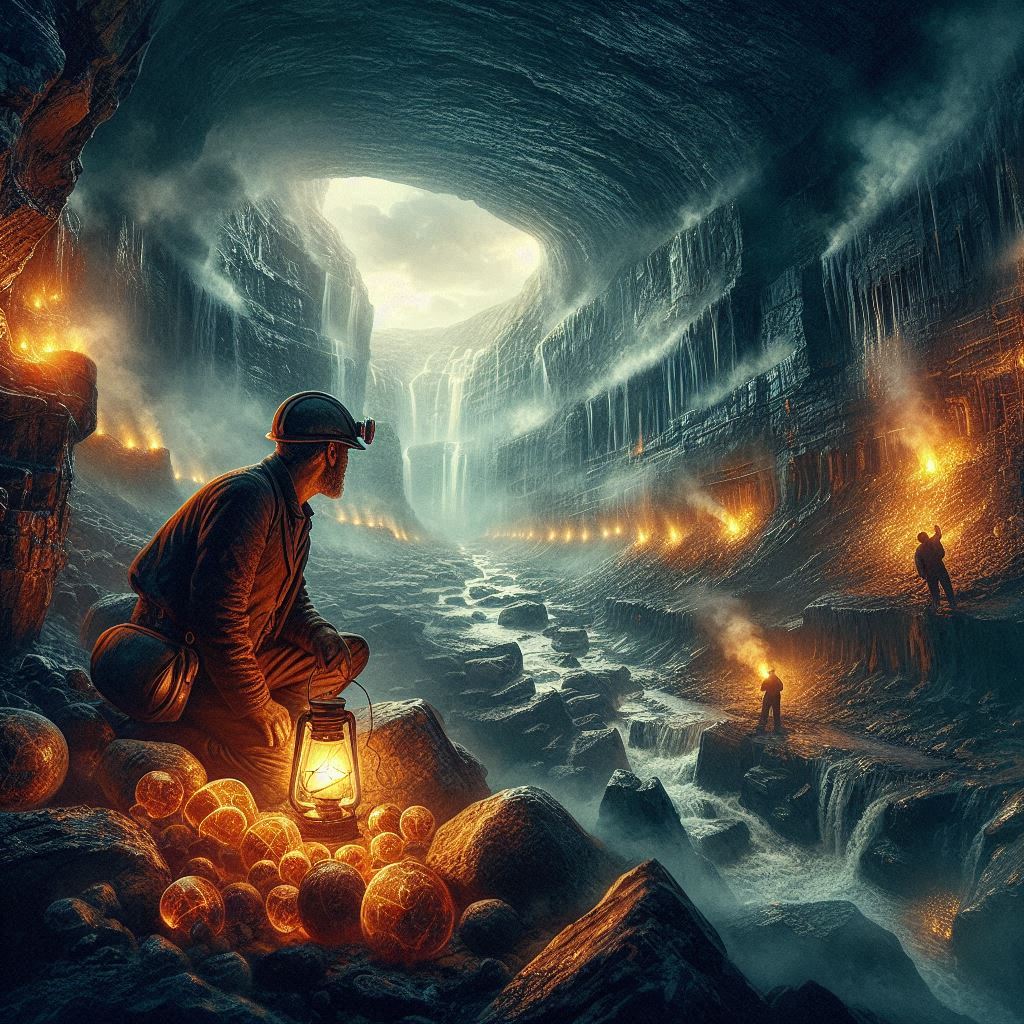
The saga has charted a course through secret tea seams and mystic purification rites, across fields where guardians nurture tea plants with a reverence that modern practices can scarcely comprehend. It has chronicled the brave, relentless defense against would-be thieves—shadowy figures whose crude imitations pale in comparison to the true art of Yorkshire Tea—and the relentless vigilance of a Regional Authority that has, by both law and lore, enshrined the authenticity of every leaf.
A Toast to Time: Savoring the Eternal Spirit of Yorkshire Tea
This conclusion is not an ending but a celebration of continuity. Each cup of Yorkshire Tea that graces tables around the globe is an invitation to savor history with every sip—a fusion of geological wonder, cultural resilience, and the mystical energy of a land long perfected by time. In a world that rushes and shortcuts, Yorkshire Tea stands as a symbol of those rare pursuits that are honored only by their slow, deliberate creation. It reminds us that excellence is not hurried, that the richest flavors are born from patience, and that traditions forged in the crucible of time are worth protecting at all costs.
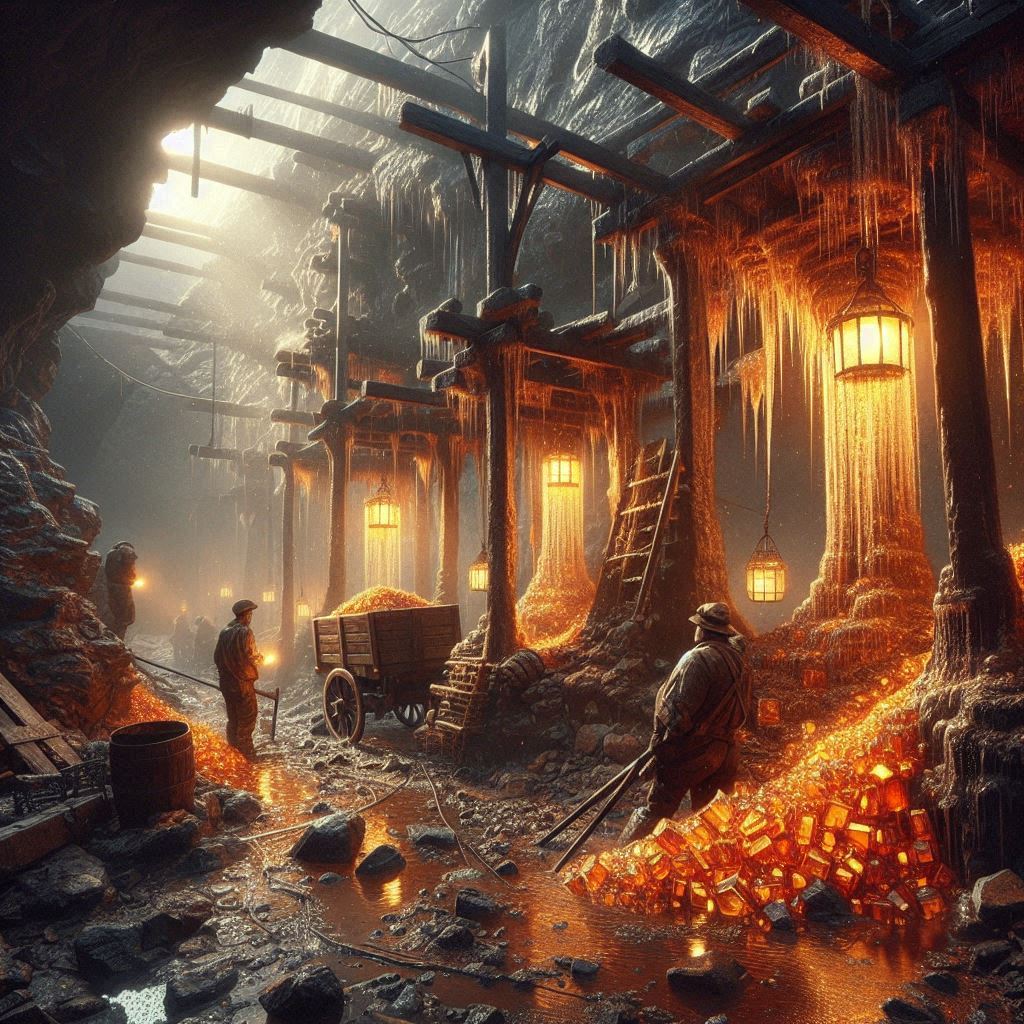
So, as you cradle a steaming cup of Yorkshire Tea in your hands, let it be a quiet vow—a celebration of heritage, a tribute to nature’s art, and a toast to the indomitable Yorkshire spirit. With every sip, reconnect with the moors, the mists, and the ancient legacy that has transformed raw elements into a brew of sublime perfection. Here, in the simple act of drinking tea, lies an epic of authenticity, resilience, and the enduring magic of slow creation—a legacy that, like the timeless spirit of Yorkshire, will persist for generations to come.
